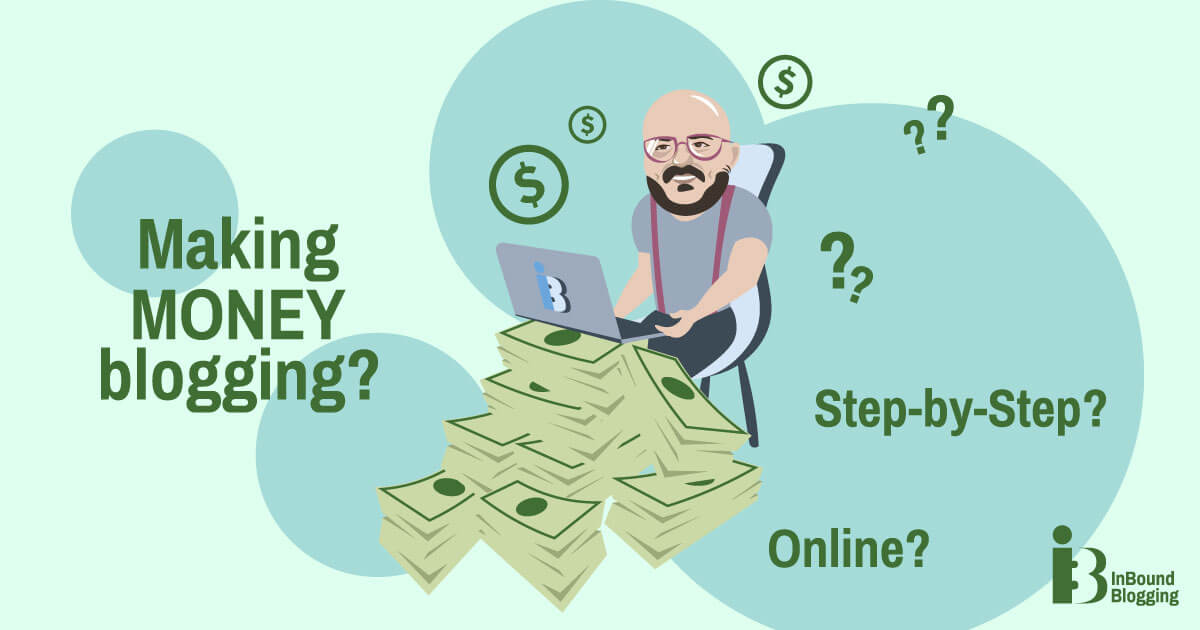Playback speed:
Ever felt like you’re navigating through a forest of artificial intelligence (AI) chatbots and tools, each one promising to be the next big thing? Trust me, trying to wrap your head around generative AI can be as tricky as solving a Rubik’s cube in the dark.
To save you from that headache, I’m diving deep to sort out two titans in the field: OpenAI and ChatGPT. I’ll shed some light on their differences, their unique features, and how they might just align with what you’ve been searching for.
So, stay tuned. Clarity is just around the corner!
ChatGPT vs. OpenAI [Key Takeaways]
- OpenAI is the company that created ChatGPT. OpenAI provides its users with a wide range of generative AI models to test and use, while ChatGPT is limited mostly to back-and-forth communication, brainstorming, and undertaking various writing tasks.
- There are many differences between ChatGPT and OpenAI’s other offerings in terms of features. Getting familiar with them helps users in determining which model best suits their needs.
- OpenAI Playground is a virtual environment for AI model exploration, while ChatGPT is a web-based chatbot.
- OpenAI offers free access to its text generation AI models through OpenAI Playground and API platforms, with commercial use requiring a paid subscription. ChatGPT is a free service with two optional paid versions (Plus and Enterprise).
What Are Generative AI Models?
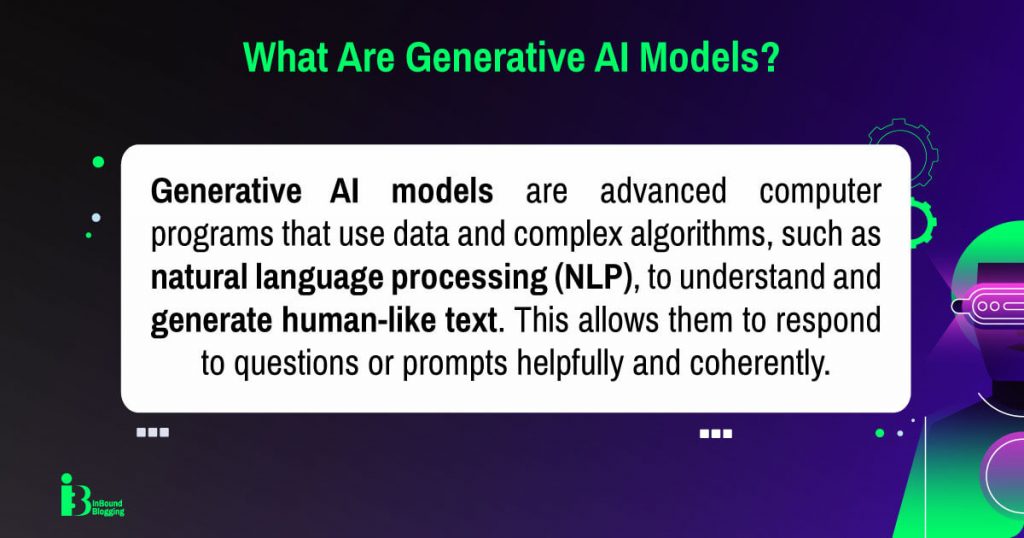
Generative AI models are advanced computer programs that use data and complex algorithms, such as natural language processing (NLP), to understand and generate human-like text. This allows them to respond to questions or prompts helpfully and coherently.
They have a rich history and are widely used for various applications.
History and development
AI, as a field of computer science, has been developing since the 1950s. It has evolved from answering simple questions to generating its own responses through generative models. It’s almost like computers are thinking for themselves.
Then in 2022, OpenAI released ChatGPT which made generative AI widely accessible. Tools like this use large language models (LLMs) that can learn from tons of books and articles on the internet. This enables them to write stories, chat, and suggest code, help with search engine optimization (SEO), and much more.
This rapid change in AI technology is reminiscent of a sci-fi movie, as it leads the new industrial era in online writing and chat.
Uses and applications
These potent tools are capable of creating various forms of content, including words, pictures, and sounds. They can predict future events and answer complex questions, too. For example, a generative AI model can analyze historical data and trends to forecast the demand for a product or service in the next quarter.
There’s no doubt about it: this technology is transforming how we create ideas, communicate, and interact, making it valuable for producing fresh content and providing visual inspiration.
I love using generative AI models to make images and captions for my blog. They are amazing and match what I write about. I also have fun picking and changing the images and captions that the models make. Generative AI models are not just helpful but also enjoyable and easy to work with.
Comparing OpenAI and ChatGPT
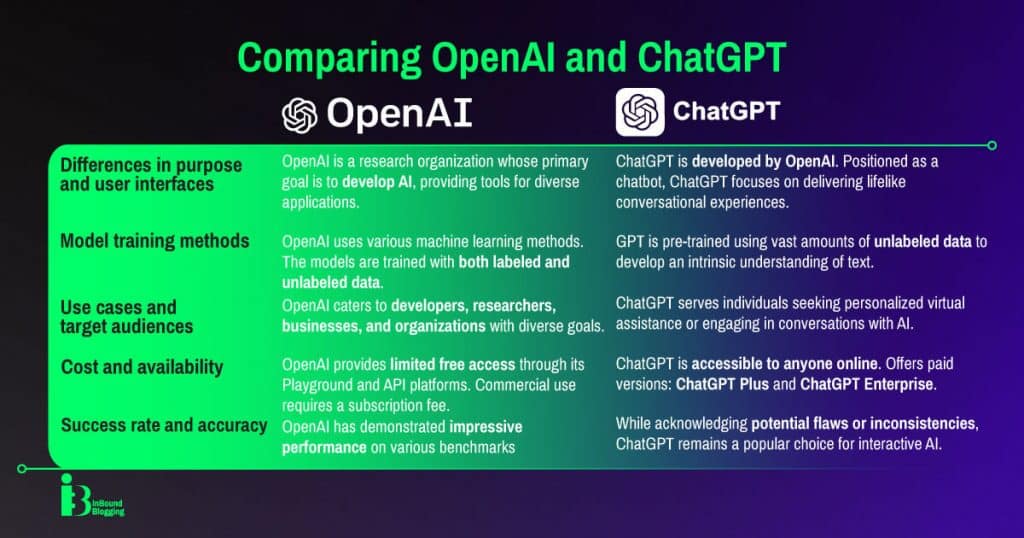
OpenAI’s platforms and ChatGPT differ in their purpose and user interfaces, as well as in their model training methods, use cases, target audiences, cost and availability, and success rates and accuracy.
Here is what I mean.
Differences in purpose and user interfaces
Let’s break it down in layman’s terms.
- OpenAI: OpenAI is a research organization whose primary goal is to develop AI for the benefit of humanity, providing tools for diverse applications. Its GPT-3 and GPT-4 models extend beyond chat, enabling developers and users to leverage their capabilities in various creative tasks, such as writing blog post outlines, coding in Python or JavaScript, and even developing apps.
- ChatGPT: ChatGPT is developed by OpenAI. Positioned as a chatbot, ChatGPT focuses on delivering lifelike conversational experiences. Its user-friendly web interface caters to a broad audience, making engaging with AI accessible and intuitive.
“In real-world applications, the choice between OpenAI and ChatGPT hinges on project needs. OpenAI offers a broad spectrum of AI technologies, suitable for diverse tasks like image recognition and complex data analysis. At my company, we often utilize OpenAI for its versatility in handling various AI challenges, especially when deep data insights are crucial.
Conversely, ChatGPT excels at conversational AI, making it ideal for projects requiring natural language processing and user interaction. Its training in language models ensures a human-like touch in text generation, which is perfect for customer service automation or interactive platforms.” — Ankit Prakash, Founder, Sprout24
Model training methods
So, how do these brainy AIs get their smarts?
- OpenAI: OpenAI employs a spectrum of machine learning approaches, including unsupervised learning, supervised learning, and reinforcement learning. The models are trained with both labeled and unlabeled data to achieve versatility. Labeled data has annotations or labels, such as object names or text sentiments. Unlabeled data lacks annotations or labels and needs more complex methods to get useful information.
- ChatGPT: GPT, the AI model behind ChatGPT, is pre-trained by absorbing vast amounts of unlabeled data to develop an intrinsic understanding of text. ChatGPT is also fine-tuned, which enhances predictability and appropriateness, often incorporating supervised learning techniques.
Use cases and target audiences
Now, let’s talk about their gigs:
- OpenAI: Offering a wide array of AI applications, OpenAI caters to developers, researchers, businesses, and organizations with diverse goals. Some might play with the OpenAI models on the OpenAI Playground, while others plug them into their projects through an API call.
- ChatGPT: Tailored for the general public, ChatGPT serves individuals seeking personalized virtual assistance or engaging in conversations with AI. Its applications extend to content writing, education, research, entertainment purposes, etc.
Cost and availability
Shifting the focus to accessibility and financial considerations, here’s what you should know:
- OpenAI: Operating as a non-profit organization, OpenAI provides limited free access through its Playground and API platforms. Commercial use requires a subscription fee, emphasizing accessibility while sustaining the organization’s mission.
- ChatGPT: As a free service with no registration or payment requirements, ChatGPT is accessible to anyone online. However, it imposes daily request limits to manage usage. There is also the option to upgrade to ChatGPT’s paid versions: ChatGPT Plus and ChatGPT Enterprise.
Success rate and accuracy
Finally, let’s get real about performance.
- OpenAI: Boasting powerful and accurate models, OpenAI has demonstrated impressive performance on various benchmarks. Admitting its imperfections, OpenAI actively addresses biases, errors, and limitations in its models.
- ChatGPT: Claiming to have the ability to generate coherent and diverse responses, ChatGPT has received positive user feedback for engaging conversations. While acknowledging potential flaws or inconsistencies, such as hallucinations, it remains a popular choice for interactive AI experiences.
Open AI Playground vs. ChatGPT
Both of these AIs offer great ways to interact but serve different needs.
OpenAI Playground is a virtual environment where users can explore AI concepts. This allows users to experiment with different AI models, such as GPT-3, GPT-4, GPT-4 Turbo, etc. You can also customize their input parameters and output formats. Whether you are an AI beginner or not, this sandbox can give you a lot of opportunities for exploration.
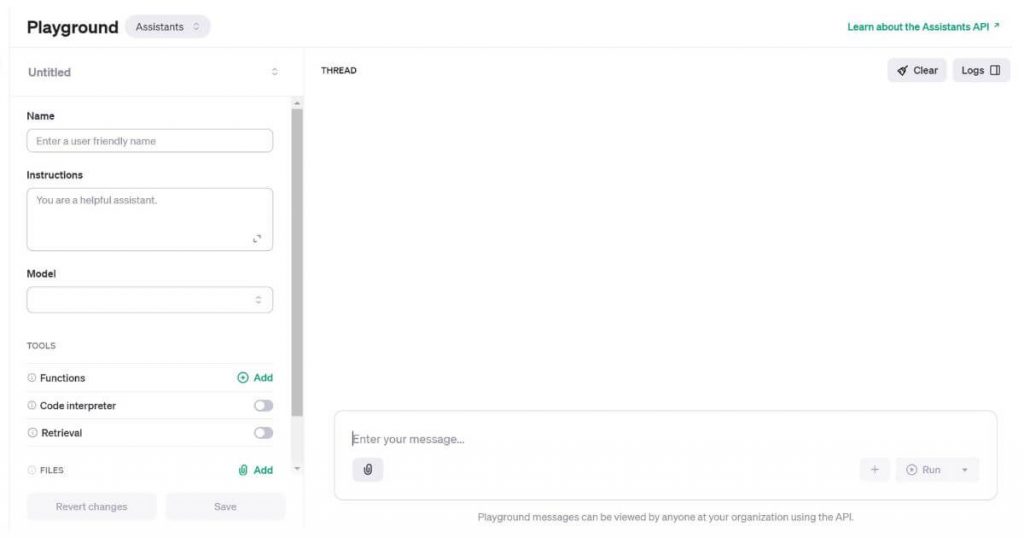
In contrast, ChatGPT is a web-based, conversational AI chatbot that uses GPT-3 (and GPT-4 for Plus and Enterprise users) to generate responses based on the user’s input. You can chat with ChatGPT on its site and mobile app, or use its API to add it to other apps. It’s a different chatbot service to OpenAI Playground that you should try out.
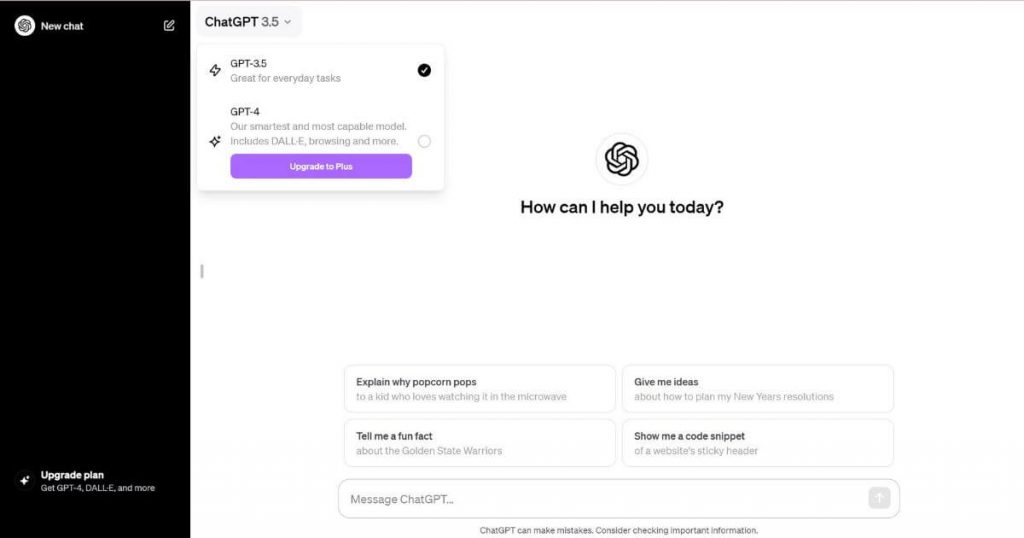
Conclusion: Which Model Is Right for You?
So, ChatGPT vs. Open AI? The answer to this question is defined by your concrete needs and audience.
OpenAI is for developers and researchers, while ChatGPT is designed for the general populace. Consider your target users and how you plan to use the particular AI tool when making your choice. Understanding these differences will help you select the model that best suits your needs.
FAQs
What’s the difference between OpenAI and ChatGPT?
OpenAI is the technology behind ChatGPT, while ChatGPT is a specific implementation of OpenAI’s GPT model.
Which is better, OpenAI Playground or ChatGPT?
OpenAI Playground is an interactive platform where users can experiment with OpenAI models, while ChatGPT is a specialized version of the GPT model designed for conversational purposes. Determining which one is better will greatly depend on your particular needs and audience.
How does AI like ChatGPT learn to talk to people?
ChatGPT learns to talk to people by studying lots of conversations using deep learning models. It uses transformers, which help it remember what was said before so it can make sense when involved in a chat.
Why are recurrent neural networks (RNNs) important in AI?
Recurrent neural networks (RNNs) matter because they remember past information while dealing with new data. This helps AIs such as ChatGPT understand long chats without forgetting what was said earlier.
What makes OpenAI’s large language models smart at answering questions?
OpenAI’s language models are smart at answering questions because they use huge datasets to figure out how humans talk and this gives them the ability to answer user questions well.
Can these AI models only work with text, or can they do other things, too?
These AIs do more than just play with words. For example, DALL·E, as part of the advanced features of ChatGPT Plus and Enterprise, creates pictures from descriptions, showing that these AIs have many great talents.
Are generative AIs like ChatGPT safe for my private information?
While generative AIs like ChatGPT prioritize user privacy, it’s essential to exercise caution and not share sensitive information during your interactions with it.

